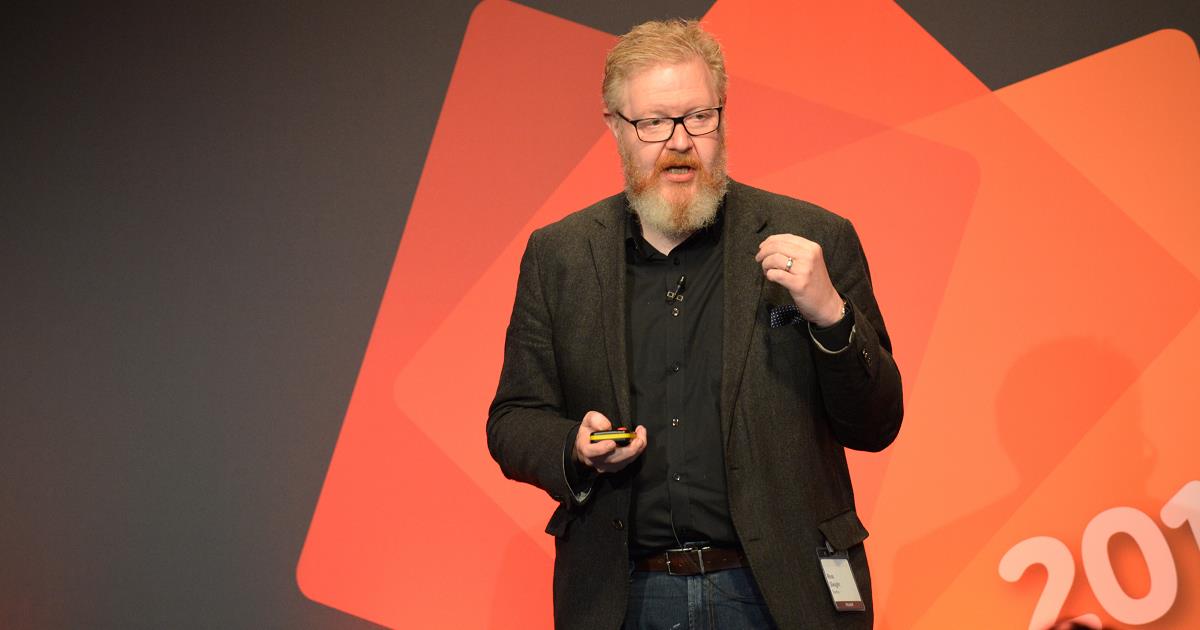[Video] How publishers can satisfy the consumers of tomorrow

As a strategy expert, chief strategy officer at Somo UK, Ross Sleight, spends significant amounts of time time studying the consumer of the future to be able to assist brands to understand how tech adoption occurs, how it impacts behaviour and culture and what they should make of these changes. At this year’s FIPP World Congress in London he explained to publishers what they need to do to satisfy the consumer of tomorrow.
Sleight said modern consumer behaviour is influenced by one main factor: the smartphone. In the past decade people’s behaviour has reached the point where they are addicted to their smartphones. A study last year by Chicago based market research company Dscout on US adults’ smartphone behaviour found that average time spent on phones was 2 hours and 25 minutes, which translated on average into 2,617 swipes or smartphone touches a day. Consumers classified as ‘heavy users’ had 132 sessions with their phones a day, culminating in 3 hours and 45 minutes on the phone, touching it 5,427 times.
Despite many consumers trying to curb their smartphone dependence, smartphone behavioural changes will intensify, said Sleight. At the moment there are two and a half billion smartphones users globally and by 2020 this is estimated to increase to five billion.
Publishers need to heed how smartphone interaction will impact their future, Sleight warned and offered four pieces of advice.
Be mindful of the end user
While people are in fact turning into ‘smombies’, short for ‘smartphones zombies’, he said, they are in fact mindful of this and many are trying to curb their smartphone addiction. Sleigh quoted this year’s Deloitte Global Mobile Consumer Survey, which indicates that 56 per cent of MIllennials and 39 per cent of all smartphone users in the US feel they use their smartphones too much. As many as 74 per cent of smartphone users want to moderate their smartphone usage but only 14 per cent feel they are being successful in doing so. “So we are in a situation where we need to be really mindful of what our customers want because we cannot just expect to keep on bashing them and inundating them with things and (continue to) expect them to react and engage.”
Be easier on consumers
Sleigh said for technology solutions to be easier on consumers they need to be faster and smarter. The average time for a fully loaded mobile page to download is 22 seconds at the moment, yet 53 per cent of mobile site visitors leave a page that takes longer than three seconds to load. This is why initiatives like accelerated mobile pages such as Facebook’s Instant Articles “where elements of pages that slow things down” are stripped away and solely concentrate on the content are creating much greater – up to 35 per cent more – engagement.
Consumers’ interface behaviour are also changing, he said. Just as we have seen a move from typing to swiping, consumers are ready to interact with voice. Last year Google recorded that 20 per cent of all mobile app and Andriod device searches were voice activated with 55 per cent of Millennials in the US preferring to use voice for searches.
“Clever publishers are thinking about their voice and audio strategy now because there are multiple opportunities to reach consumers,” he warned. These opportunities will increase as we start to see consumers utilising home speakers such as Google’s Alexa and commuters spend more time in vehicles.
Be relevant
To be relevant, said Sleight, factors such as personalisation, customisation and data comes into play. “Because there are so much out there – so much information and content coming to us – publishers become guilty of filter failure… Consumers do not have enough filters to be able to navigate all of this content. And we as publishers are not helping as we are pushing out more and more content without these filters in place,” he warned.
He said what’s happening as a result of this, is that consumers have become editors themselves to (try and) find their way between real news, fake news and promoted news. “The consumer is having to do the filtering themselves.”
To prevent this, publishers need to make smarter use of user profiles to understand who they are communicating with, what the context of communication is and how to personalise the message. Once a publisher makes sense of the user profile, behaviour, context and location they they will be able to properly filter the content offering.
Be WOW!
People get bored of the same old things, Sleight warned. “Consumers love the ability to be able to experience things for the first time and be wowed by completely new experiences. When we look at how technology affects consumer behaviour augmented reality (AR) is undoubtedly one of the key drivers.”
As Google and Apple’s AR kits are now becoming more popular, opportunities for publishers are also improving. In fact, said Sleight, up to two thirds of people who get the opportunity to interact with AR will take it. Similar trends are developing for virtual reality (VR) which means publishers will have to invest in new technologies.
“Take the opportunities to explore and innovate to make people just go WOW!,” he said.
See Ross’ presentation here.
More like this
Download the FIPP World Congress 2017 speaker presentations
Globalising your niche: Building Vogue International
Why content should be created specific to each platform
How Bloomberg Media is expanding Businessweek’s global footprint









